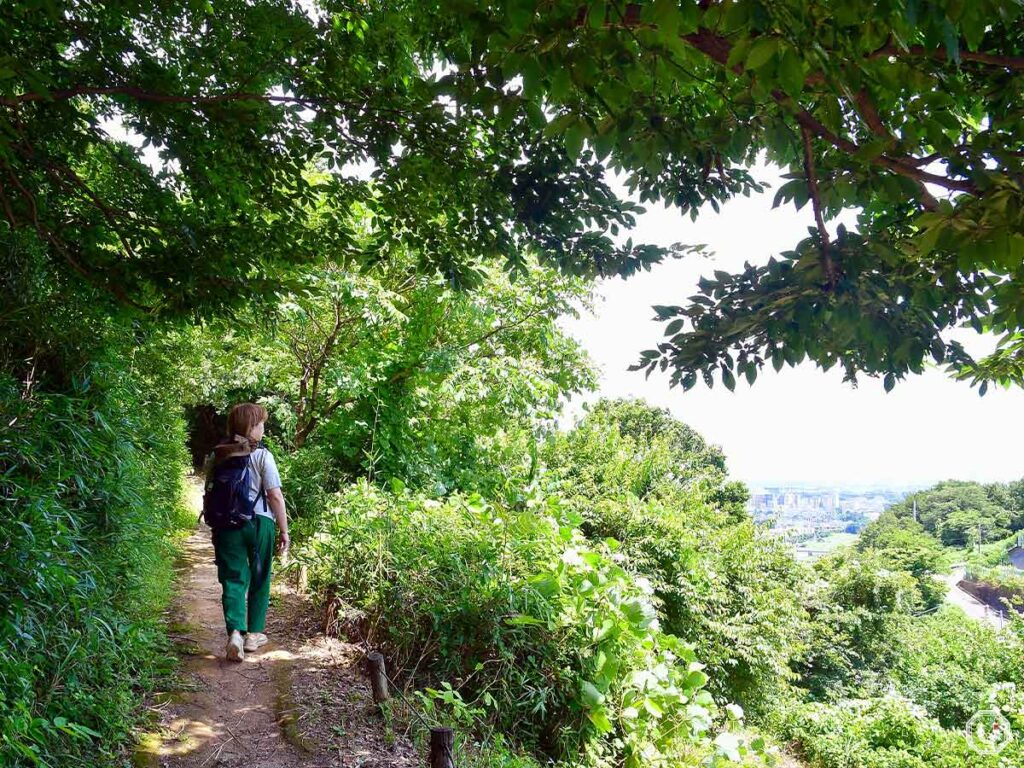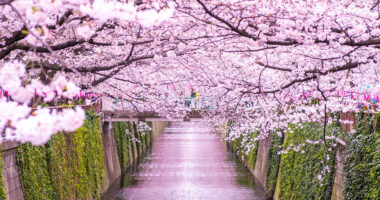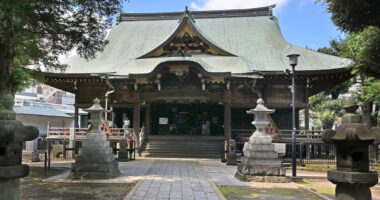From Shinjuku Station, it takes about 45 minutes on a direct train to reach Naganuma Station, the closest stop to “Tokyo Metropolitan Naganuma Park” (referred to hereafter as “Naganuma Park”) in Hachioji, Tokyo.
This lush metropolitan park spreads across hilly terrain with about 100 meters of elevation difference. With great access from central Tokyo, it’s a perfect spot for hiking or forest bathing in rich natural surroundings.
From Naganuma Station, it’s about a 5-minute walk to the park entrance. While there’s a slight uphill slope, the route is well-maintained and easy even for beginners.
If you’re looking to escape the city noise, take a refreshing walk among the trees, listening to birdsong along the way.
From station: a tranquil hiking course
There are no shops inside the park, so be sure to prepare drinks and light snacks around Naganuma Station before heading in.
Now, let’s get started. Exit the ticket gate at Naganuma Station and turn right. Walk through the residential area for about five minutes, and you’ll see a small wooded hill ahead.
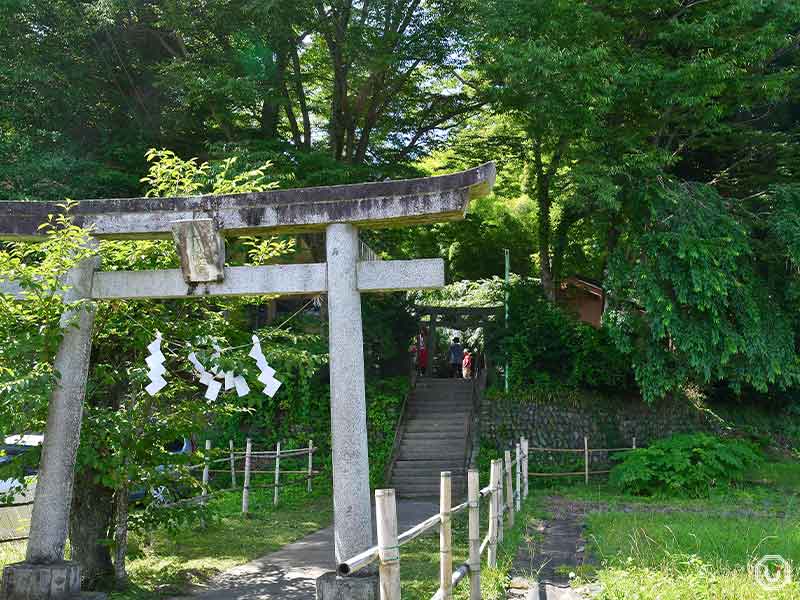
Rokushagū Shrine
Near the entrance to Naganuma Park is a small shrine called Rokushagū Shrine.
However, you cannot pass directly from the shrine grounds into the park. Continue along the public road, following the path toward the main entrance of the park, known as Naganuma-guchi.
At Naganuma-guchi, you’ll find an information board with a map as well as a park leaflet, which help you check the routes inside the park.
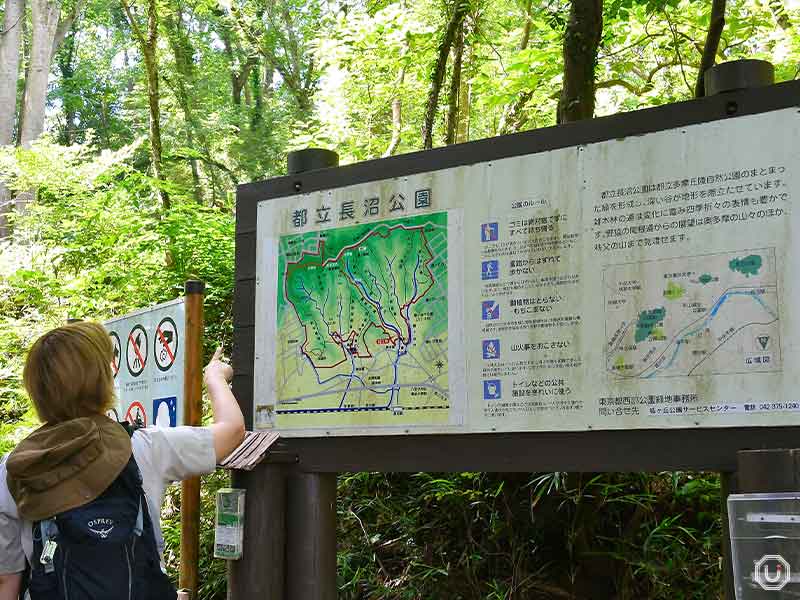
Park information board at Naganuma-guchi
One of the highlights of Naganuma Park is that, in addition to a loop trail around the park’s perimeter, there are several ridge paths leading up to the higher ground.
This gives visitors plenty of freedom to explore, with each route offering different views and atmospheres.
Choosing your route is part of the fun, but some paths are steep, so it’s a good idea to check the overall map before setting out.
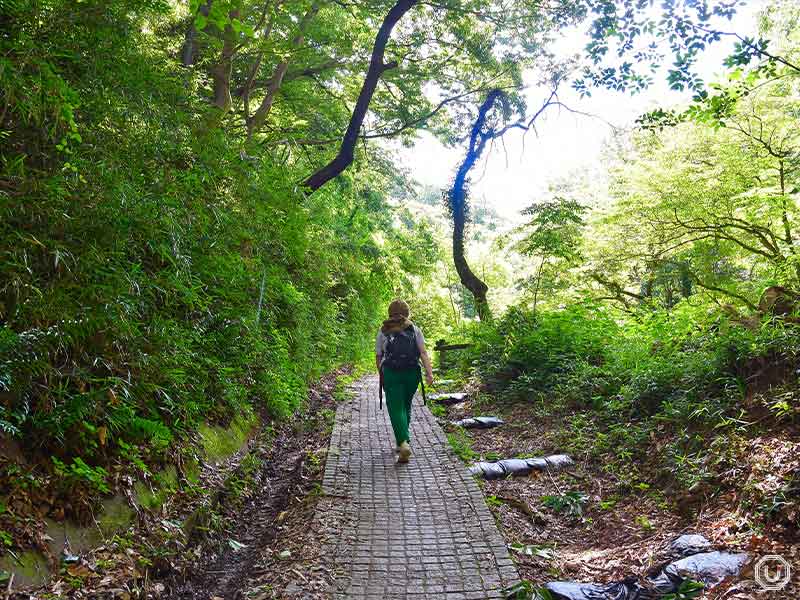
Paved path called Kirifuri no Michi inside the park
Some park paths are paved, but many remain in their natural state. Since the terrain can be uneven, it’s recommended to wear comfortable shoes, such as sneakers.
Be especially careful after rain, when paths can become slippery. Also, make sure to take sufficient insect repellent measures so you can enjoy your walk comfortably.

Bench along Kirifuri no Michi
Take a leisurely walk along Kirifuri no Michi, which runs through the center of the park, and fully enjoy the natural surroundings of Naganuma Park.
We visited in the height of summer in July, yet the forested paths were surprisingly cool, with a refreshing breeze flowing through the trees.
Along the way, rest spots with benches are scattered throughout, allowing you to continue your walk at a comfortable pace.

Golden-rayed lily
The yamayuri (golden-rayed lilies) were in full bloom, and the path lined with broadleaf trees like the kunugi (Japanese chestnut oak) and konara (Konara oak) truly evokes the feeling of a “Tokyo forest.”
Seasonal flowers change throughout the year, offering new discoveries each time you visit.
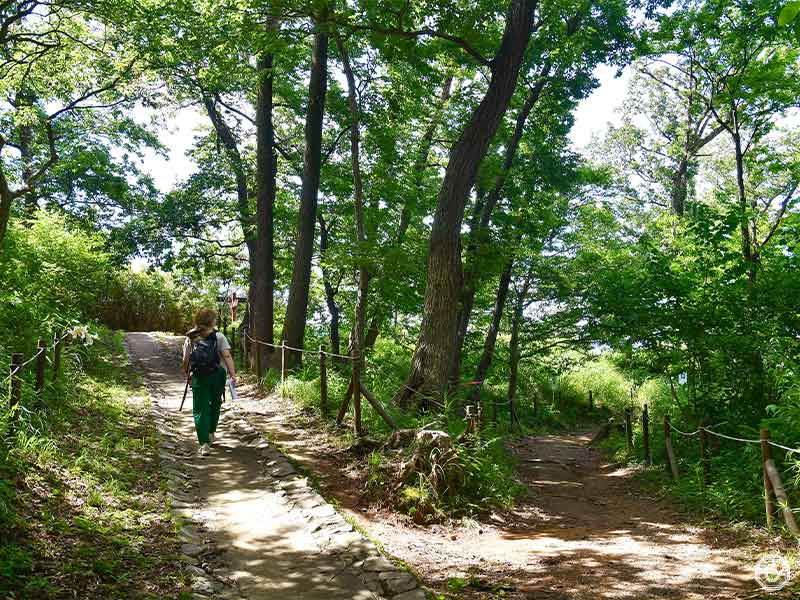
Kirifuri no Michi
Panoramic views from the observatory and a variety of charming routes
After about 15 minutes along Kirifuri no Michi, you’ll reach the observatory area. The observatory features a roofed gazebo where you can rest and enjoy the beautiful scenery.
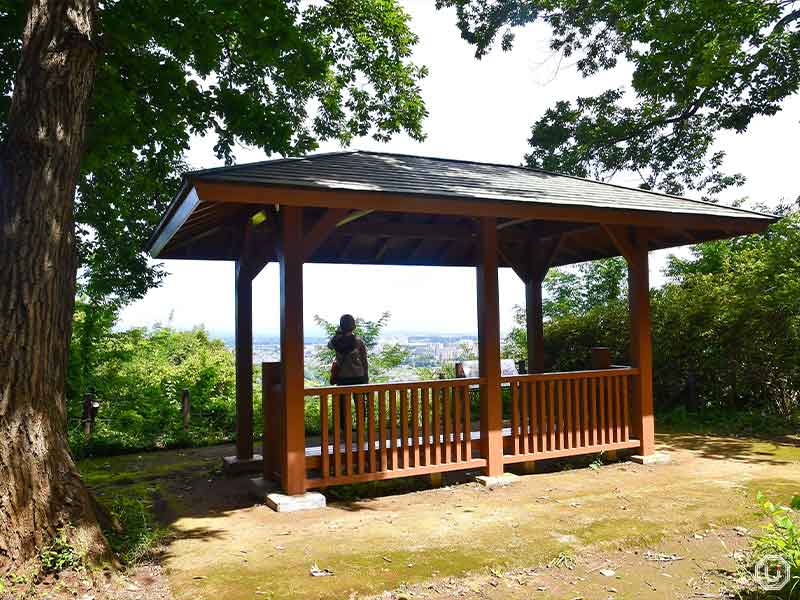
Gazebo at the observatory
On a clear day, the rolling hills of Hachioji stretch before you, and in the distance, you can sometimes see the mountains of Okutama and Chichibu.
The panorama glimpsed through the trees makes you forget any fatigue from the climb.
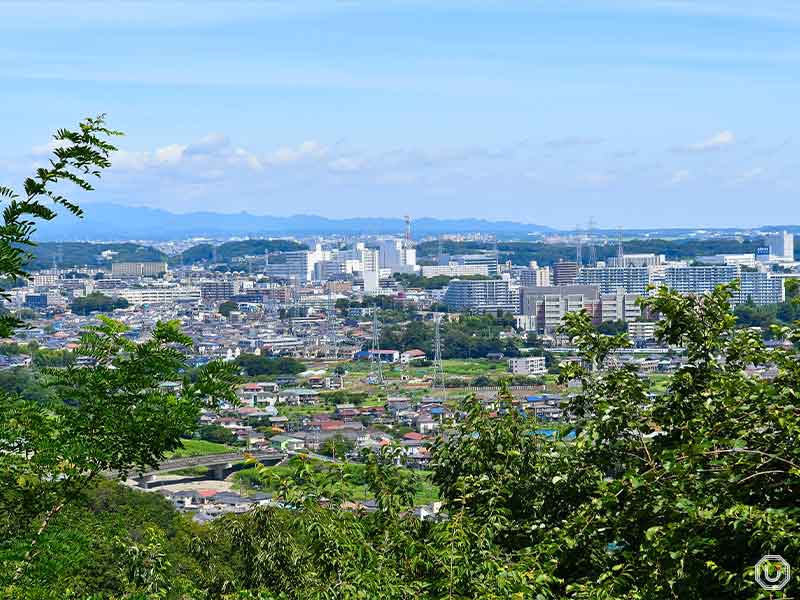
View from the observatory
From the observatory, you can follow the Yaen Ridge Trail toward the other park entrance, Hirayama-guchi, located directly opposite Naganuma-guchi.
The Yaen Ridge Trail is a gently undulating path along the ridge.

Yaen Ridge Trail
Popular among trail runners, this trail is relatively stable underfoot and easy to walk while fully enjoying the natural surroundings. We encountered many runners during our stroll.
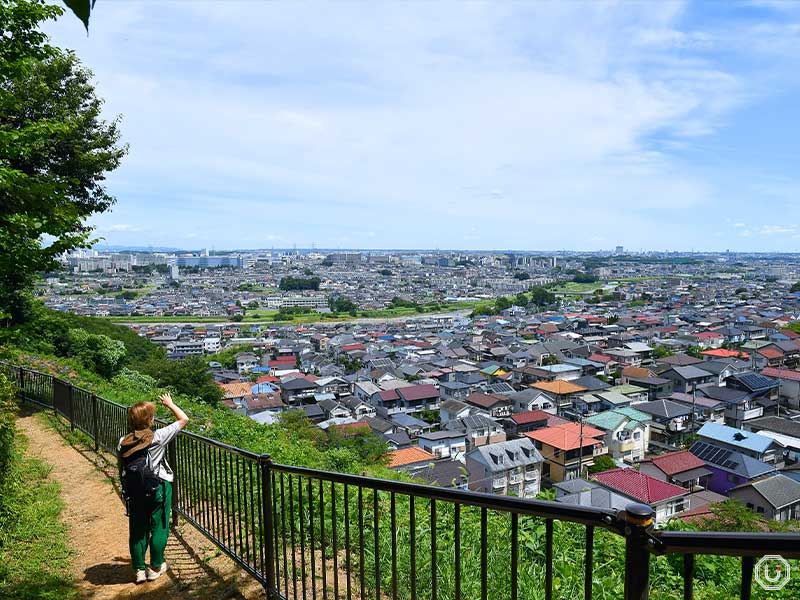
View seen immediately after climbing the steps at Hirayama-guchi
We also explored the ridge path along Tochimoto Ridge.
While Yaen Ridge Trail runs along the southern edge of the park, Tochimoto Ridge stretches toward the northern edge.
This ridge offers several scenic spots where you can enjoy the views as you walk.

Summit garden
Returning to the intersection of Yaen Ridge Trail and Tochimoto Ridge, a short walk west brings you to the summit garden.
The area features spacious green spaces, a roofed rest area, and well-maintained public restrooms, making it perfect for a picnic.
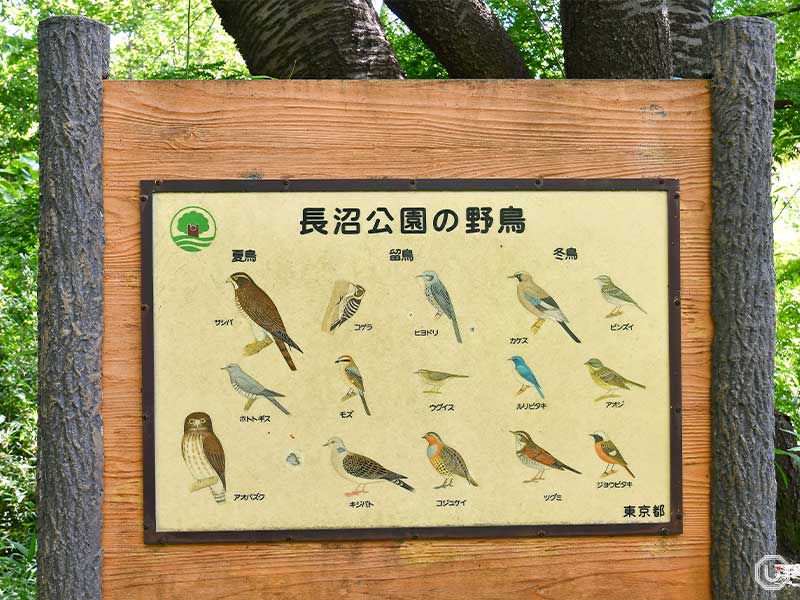
While exploring Naganuma Park, the chirping of many wild birds enhances the sense of nature’s abundance.
Species such as Japanese tit and Daurian redstart are often spotted, making it a great destination for birdwatching enthusiasts.
Discover art and local cuisine in the deep forest
Walking 2–3 minutes west from the summit garden, you’ll spot a small building nestled among the trees: Tōge no Chīsana Bijutsukan (Little Museum on the Ridge).
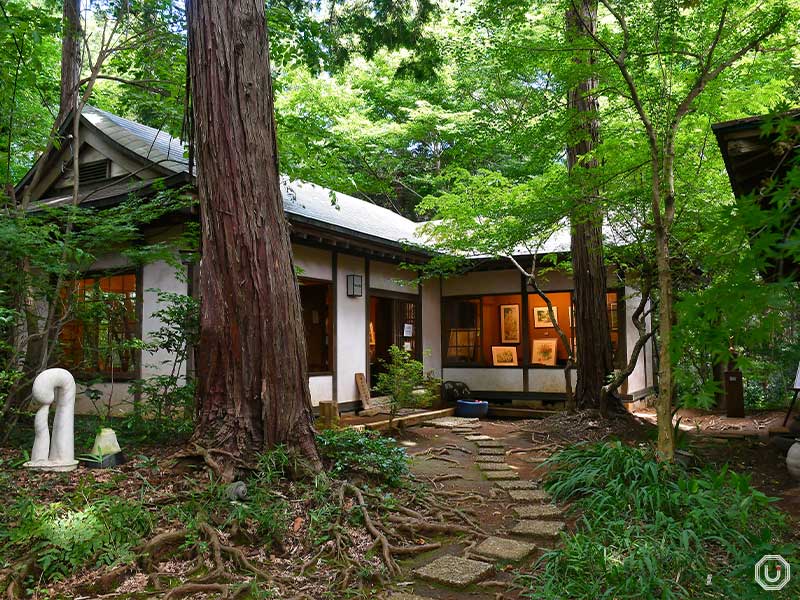
Exterior of Tōge no Chīsana Bijutsukan (Little Museum on the Ridge)
Run by local artists and volunteers, the museum displays a variety of art, ranging from hobbyist works to professional exhibitions.
Exhibitions rotate regularly, and on the fourth Saturday of each month, there are even koto (traditional Japanese string instrument) performances.
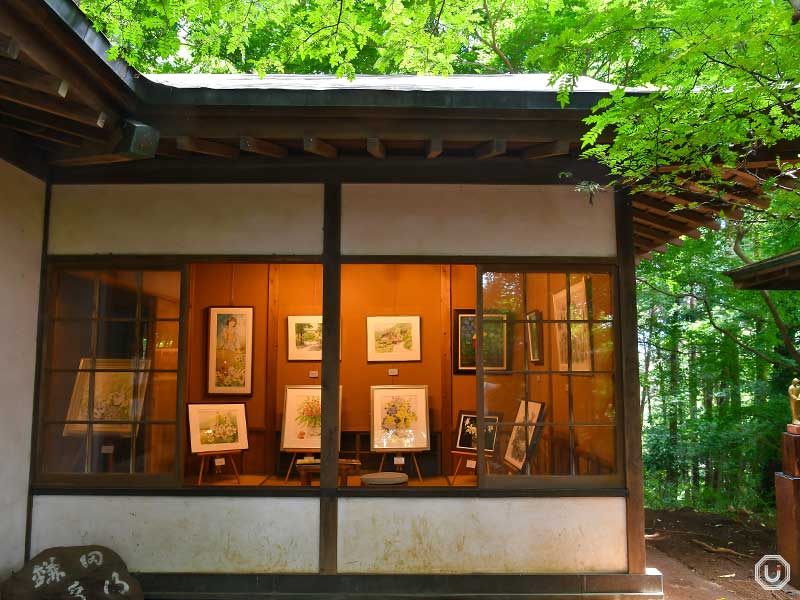
In autumn, the maple trees surrounding the museum turn vibrant shades, delighting visitors. The museum is open Thursday through Sunday, from 10:00 AM to 16:00 PM.
Next to the museum, “Kamata Toriyama” offers charcoal-grilled chicken dishes enjoyed around an irori (traditional sunken hearth). Combined with the park’s natural setting, this is a special opportunity to experience local food culture.
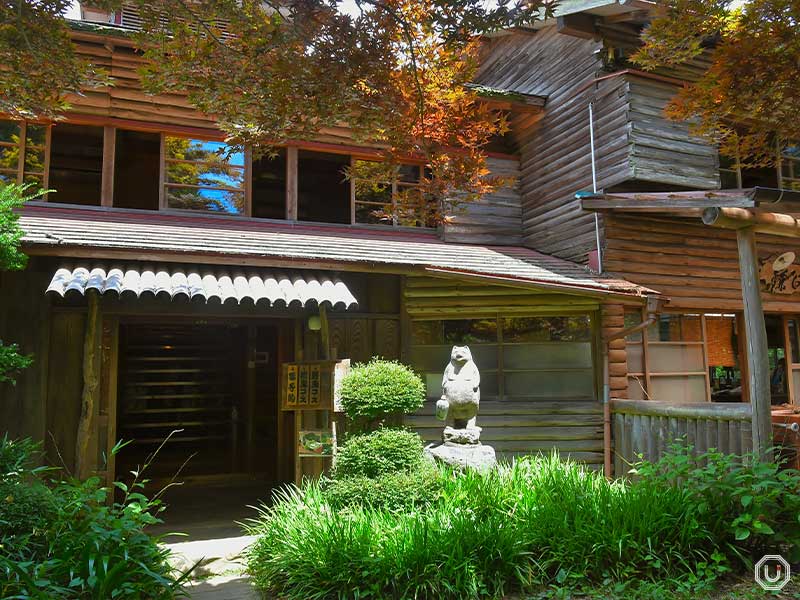
Exterior of Kamata Toriyama
A relaxing decent to fully enjoy nature
For the descent, take Tonogaya no Michi, a gently sloping path with open views.
Along this route, many cherry trees line the way, forming a spectacular flower tunnel in spring.
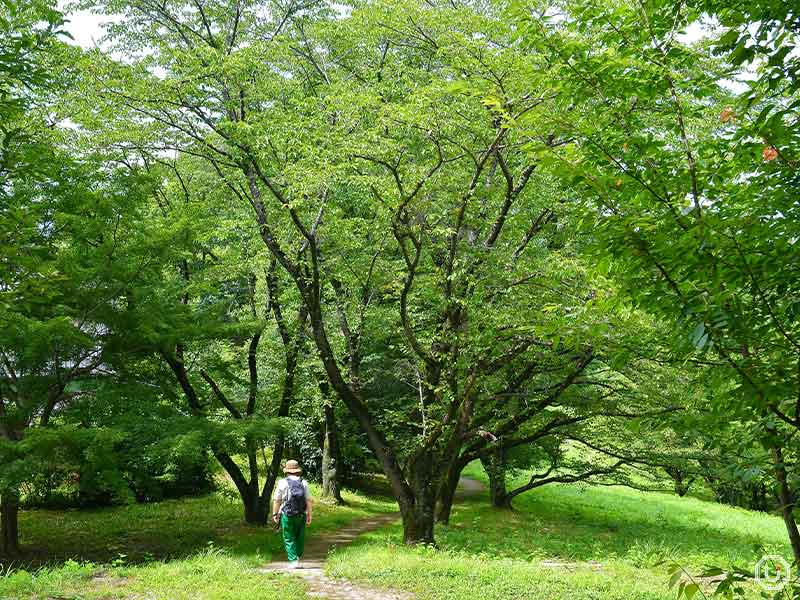
Tonogaya no Michi
This route, featuring streams and small bridges, uses the natural terrain to create a gentle path, allowing you to enjoy the scenery all the way back to the station.
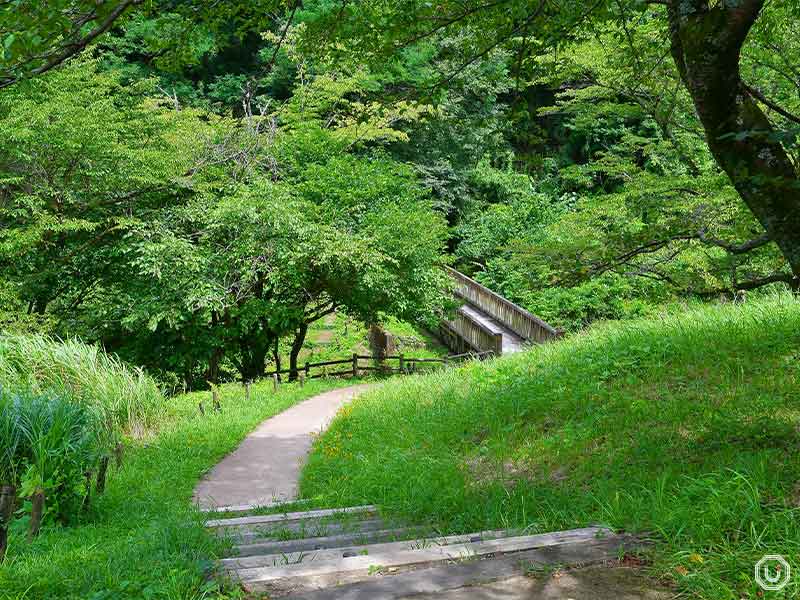
Naganuma Park is a hidden gem, offering lush hiking experiences that make it hard to believe it’s just a train ride away from central Tokyo.
The full loop takes about an hour. With mostly low elevation and well-maintained paths, it’s suitable for beginners and those with limited stamina.
With seasonal flowers and birds, beautiful views, and a small museum and grilled chicken restaurant nestled in the forest, this park offers a special experience you won’t find in typical urban parks.
It’s a perfect destination for anyone wanting to enjoy a forest bath just a short distance from Tokyo.
Information
| Name | 都立長沼公園 Tokyo Metropolitan Naganuma Park |
|---|---|
| Address | Naganuma-chō / Shimo-Yuzuki, Hachiōji City, Tokyo |
| Phone number | 042-375-1240 Sakuragaoka Park Service Center |
| Visiting Hours | 24 hours |
| Closed | No holidays |
| Admission fee | Free |
※The information in this article is current as of August 2025
